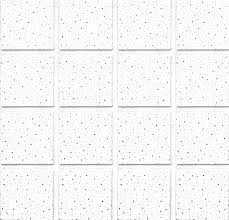- Afrikaans
- Albanian
- Amharic
- Arabic
- Armenian
- Azerbaijani
- Basque
- Belarusian
- Bengali
- Bosnian
- Bulgarian
- Catalan
- Cebuano
- Corsican
- Croatian
- Czech
- Danish
- Dutch
- English
- Esperanto
- Estonian
- French
- German
- Greek
- Hindi
- Indonesian
- irish
- Italian
- Japanese
- Korean
- Lao
- Malay
- Myanmar
- Norwegian
- Norwegian
- Polish
- Portuguese
- Romanian
- Russian
- Serbian
- Spanish
- Swedish
- Thai
- Turkish
- Ukrainian
- Uzbek
- Vietnamese
Nën . 25, 2024 10:36 Back to list
tile grid ceiling
Understanding Tile Grid Ceiling A Comprehensive Overview
Tile grid ceilings, commonly known as drop ceilings or suspended ceilings, are a popular choice in both residential and commercial spaces. These ceilings not only offer aesthetic appeal but also functional benefits, making them an integral component of modern architectural design.
At a fundamental level, a tile grid ceiling consists of a framework suspended from the structural ceiling, creating a space where lightweight tiles can be placed. This grid framework is typically made from metal or plastic, offering a sturdy and durable base for the ceiling tiles. The tiles themselves can be crafted from various materials, including mineral fiber, fiberglass, and even metal, each providing different aesthetic and acoustic properties.
One of the primary advantages of a tile grid ceiling is its ability to conceal wiring, plumbing, and ductwork. By installing a drop ceiling, homeowners and business owners can maintain cleaner lines and a more polished appearance in their spaces. This is especially beneficial in commercial environments where maintaining a professional image is paramount. Furthermore, accessing these hidden systems becomes easier; the tiles can be removed and replaced without damaging the overall structure.
Acoustic performance is another significant benefit of tile grid ceilings. Many acoustic tiles are designed to absorb sound, reducing echo and noise levels in a room. This feature is particularly advantageous in schools, offices, and healthcare facilities where a quieter environment can enhance productivity and comfort. By selecting the right type of acoustic tile, it is possible to achieve a balance between sound absorption and aesthetics.
tile grid ceiling

In addition to practicality and acoustics, tile grid ceilings also allow for creative design options
. They come in a variety of styles, colors, and finishes, enabling architects and designers to tailor the look of a space according to their vision. From sleek, modern designs to more traditional or textured looks, the versatility of tile grid ceilings adds to their appeal. Moreover, they can easily accommodate lighting fixtures, ventilation systems, and other design elements, further enhancing the overall aesthetics.Installation of tile grid ceilings is typically a straightforward process, making them an attractive option for those looking to renovate their spaces. While professional installation services are available, many DIY enthusiasts find that they can install a drop ceiling themselves with the right tools and materials. The ease of installation contributes to cost savings, both in materials and labor.
Maintenance is generally low for tile grid ceilings as well. Most ceiling tiles are designed to be durable and resistant to stains. In the event of damage, individual tiles can be replaced without disrupting the entire ceiling. Regular cleaning with a damp cloth or mild detergent can keep the tiles looking fresh and new, ensuring longevity.
Sustainability is another factor to consider with tile grid ceilings. Many manufacturers are now producing tiles made from recycled materials, contributing to environmentally friendly building practices. By choosing sustainable products, consumers can lessen their ecological footprint while still achieving their design goals.
In conclusion, tile grid ceilings offer a blend of functionality, aesthetic appeal, and versatility that makes them a popular choice in various applications. Their ability to conceal mechanical systems, improve acoustic properties, and enhance visual design makes them an ideal solution for many modern spaces. With options for DIY installation, low maintenance requirements, and sustainable choices, tile grid ceilings present a compelling case for anyone looking to upgrade their interiors. As architectural trends continue to evolve, it is likely that the popularity of tile grid ceilings will endure, offering endless possibilities for future designs.
-
Transform Interiors with PVC Gypsum Ceiling: A Stylish, Durable, and Moisture-Resistant SolutionNewsMay.19,2025
-
The Smart Interior Upgrade: Discover the Durability and Versatility of Gypsum Ceiling Access Panel SolutionsNewsMay.19,2025
-
The Smart Choice for Interior Design: Discover the Value of PVC Gypsum Ceiling SolutionsNewsMay.19,2025
-
Mineral Fiber Ceiling Tiles: The Smart Blend of Performance and AestheticsNewsMay.19,2025
-
Mineral Fiber Ceiling Tiles: The Superior Choice Over Gypsum for Sound and Fire SafetyNewsMay.19,2025
-
Mineral Fiber Ceiling Tiles: Eco-Friendly Strength and Style for Every CeilingNewsMay.19,2025







